
NUWC Newport Names Chhim Head of the Undersea Warfare Combat Systems
architecture and systems engineering requirements were properly addressed throughout the acquisition life cycle, and successfully demonstrating cybersecurity-compliant UUV architectures for at-sea demonstrations.Chhim earned a bachelor's degree in object-oriented mathematics from the University of Massachusetts at Dartmouth in 2005, and a master's degree in cybersecurity from Norwich University in Northfield, Vermont, in 2007.NUWC Division Newport is a shore command of the U.S. Navy within the Naval Sea Systems Command, which engineers, builds and supports America’s fleet of ships and
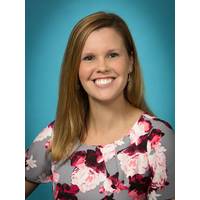
NUWC Division Newport Names Chhim Director of Cybersecurity for Undersea Warfare
work that she conducted with software developers ensuring that SWFTS subsystems successfully integrated the cybersecurity capabilities and performed the appropriate testing to validate its cybersecurity integrity.Chhim earned a bachelor’s degree in object-oriented mathematics from the University of Massachusetts at Dartmouth in 2005 and a master’s degree in cybersecurity from Norwich University in Northfield, Vermont, in 2007.“These past four years were invaluable to my professional and personal growth and I am so grateful for the opportunities I have had here at NUWC Division Newport
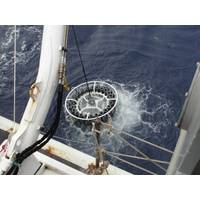
Case Study: Cables in Underwater Missions
are diverse. Projects can include seismic surveys, marine life studies and pollution tracking. The cables are manufactured differently from general industrial versions, hand-build for often unique purposes. Notably, Cortland has worked with the School of Marine Science and Technology at the University of Massachusetts to produce a specially designed electrical coaxial cable to conduct a census of Atlantic sea scallops, and with the National Oceanic and Atmospheric Administration to decrease deployment infrastructure and costs for tsunami warning buoys. Both projects needed cables which were not commercially
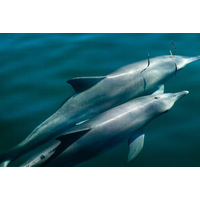
Fundraising Campaign Launched For 10-Year Dolphin Research Project
Dr. Richard Connor, Professor of Biology at the University of Massachusetts, has embarked on a journey to Shark Bay in the western part of Australia where he has studied a wild population of Indo-Pacific bottlenose dolphins since 1982.Dr. Connor is the co-Director of the Dolphin Alliance Project (DAP), and President of the nonprofit Dolphin Alliance Project, Inc., which is aggressively seeking donations to continue funding DAP research.The Dolphin Alliance Project’s mission is to learn everything they can about these unique underwater creatures during the Dolphin Decade, an ambitious ten-year

Atlantic Canada: Where the World’s Subsea Technology Grows
spend two weeks. The only thing we ask: if you have brick and mortar in your facility, we would like a reciprocal arrangement. So the ‘visiting membership’ aspect has been baked in from the start. This has been formalized with a (December 2016 signed) MOU with the University of Massachusetts Dartmouth. UMass Dartmouth has the CIE, Center for Innovation and Entrepreneurship, which is a tech center and incubator owned and run by UMass Dartmouth. It was not designed to be explicitly ocean technology, but guess what … it’s mostly ocean technology because it is southeast
Some Like it Hot: Scientists Drill off Japan for Sizzling Life
the temperature limits of life are unclear. "My guess is that 121°C is not the highest temperature at which life can grow and replicate," Derek Lovley, a U.S. scientist who helped identify Strain 121, the microbe that can reproduce at 121°C. Lovley, of the University of Massachusetts in Amherst who is not involved in the Japanese project, told Reuters that it might be possible to adapt Strain 121 to higher temperatures and that other unknown life forms may live in even hotter places. Guidelines for sterilising surgical instruments in hospitals often stipulate
Horizon Marine Adds Three New Hires
M.S. in Environmental Engineering and Oceanography from the University of Connecticut. Aaron’s focus to date has been in air-sea interactions as they relate to storm surge forecasting, numerical modeling and ocean observations. Michael Leber is a 2013 cum laude graduate of the University of Massachusetts-Lowell where he earned his B.S in Environmental Science/Atmospheric Science with a minor in Mathematics. He is expected to receive his M.S. in Environmental Studies/Atmospheric Science this December. Patrice Coholan, President of Horizon Marine, said, &ldquo
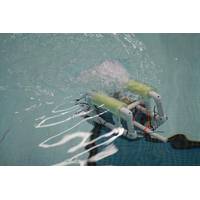
Students Compete in ROV Competition
The Fifth National SeaPerch Challenge welcomes 140 middle school and high school student teams from around the country to compete on May 30, 2015 at the University of Massachusetts Dartmouth. The students designed, built and tested their SeaPerch underwater remotely operated vehicles (ROVs) in their local, district and regional events, and the winners were invited to compete in the National SeaPerch Challenge. These teams will gather at the Tripp Athletic Center to test their skills and designs by putting their SeaPerch ROVs through a series of underwater challenges and will present their ROV
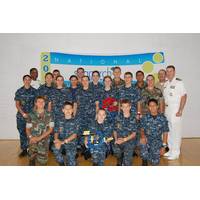
Seaperch Underwater Robotic Championships
This year the SeaPerch Program will celebrate a half decade of national underwater robotic championships. On the last Saturday in May, the fifth National SeaPerch Challenge will be held on the University of Massachusetts Dartmouth (UMassD) campus where 150 teams of middle and high school students from across the country will compete on the national stage. The phenomenal growth of the event is evident with a simple look back to the inaugural National Challenge, staged in Philadelphia five years ago attracting 38 teams and 187 students. In May more than 1,200 students, family and friends will


 February 2025
February 2025





